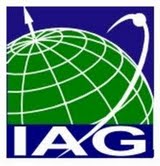
Sub-Commission 4.3:
Remote Sensing and Modelling of the Atmosphere
COMMISSION 4: Positioning & Applications
International Association of Geodesy
Steering Committee
President: Marcelo Santos (UNB, Canada)
Vice-President: Jens Wickert (GFZ, Germany)
Secretary: Andrzej Krankowski (UWM, Poland)
Member-at-large: Tiger Liu (NCU, Taiwan)
Member-at-large: Junhong Wang (UCAR, USA)
Terms of Reference
The objective of Sub-Commission 4.3 (SC 4.3) is to coordinate research dealing with the treatment, interpretation and modelling of measurements collected in the atmosphere for the purpose of improvements in geodetic positioning as well as for better understanding the atmosphere itself. Even though GNSS techniques are seen here as the primary research tools, other sensors also bring important information on the atmosphere and as such should be considered in the context of this Sub-Commission. Dedicated satellites, having on-board GNSS receivers, can also contribute to atmospheric studies by exploring the atmosphere-induced bending of GNSS signals while propagating through the atmosphere, to furnish round-the-clock weather data, monitor climate change, and improve space weather forecasts. Geodetic positioning can benefit and contribute to atmospheric models, such as Numerical Weather Prediction (NWP) models. Novel advancements in modelling the atmosphere as applied to positioning, error sources, instrumentation, dedicated missions, and real- or near real-time data access should also be contemplated. SC4.3 will foster linkages with sister scientific and professional organizations, such as IAG, ISPRS, FIG, IEEE and ION.
Objectives
- To explore the synergy that exists between Geodesy, meteorology and ionospheric sciences.
- To encourage the processing of more and more LEO and also ground based data more and more also in near-real and/or real time.
- To study the application of readily available data from numerical weather prediction models (data provision, assimilation techniques).
- To study and suggest ways for homogenization of long term data set for climatologic investigations.
- To investigate the development and enhancement of the GNSS-based sounding techniques, e.g. neutral atmosphere/ionosphere tomography, GNSS reflectometry/scatterometry for altimetry, meteorology, soil moisture.
- To exploit the potential of new GNSS signals’ structures for GNSS based atmospheric remote sensing.
- To suggest additional platforms for GNSS based atmospheric remote sensing (buoys, aircrafts, balloons, more dense ground networks, LEO constellations).
- To follow, study and contribute towards the technical and scientific advances in atmospheric research.
- To suggest standard definitions and terminology as per appropriate in the context of Geodesy and atmospheric sciences.
Program of Activities
- To promote research collaboration among research groups worldwide.
- To organize and/or participate in scientific and professional meetings.
- To maintain a web page concatenating the Sub-Commission activities and reports.
- To encourage special issues of the Journal of Geodesy on atmospheric applications to Geodesy.
Study Group
SG4.3.1 Ionosphere Modeling and Analysis
Chair: Michael Schmidt(DGFI, Germany)
Co-Chair: Mahmut O. Karslioglu (Middle East Technical University, Turkey)
Terms of Reference
The general objective of this study group is the development of ionosphere models based on physics, mathematics and statistics. For this purpose we intend to derive appropriate parameter estimation and assimilation methods based on the combination of different observation techniques. Thus, our overall intention is the development of data-driven models, e.g. for the four-dimensional electron density. Furthermore, we intend to work on real-time modeling, ionospheric prediction, on the evaluation of observations of ionospheric anomalies associated with episodic events and on the densification of global models by means of regional approaches.
Working Groups
WG4.3.1 Standards for space weather products for geodetic and ionospheric studies
Chair: Andrzej Krankowski (UWM, Poland)
Co-Chair: Irina Zakharenkova (IZMIRAN, Russia)
Description
The objective of this Working Group is to suggest common international standards for the dissemination of space weather products used in geodesy and ionospheric studies. This WG will work in close scientific collaboration with IGS, URSI and COSPAR IRI group.
WG4.3.2 Inter-comparison and cross-validation of tomography models
Chair: Alain Gaiger (Zurich, Switzerland)
Co-Chair: Witold Rohm (RMIT, Australia)
Description
This WG intends to address the main issues dealing with GNSS tomography. Promote the inter-comparison and cross-validation of different tomography models and approaches by using same data sets over same areas. Improve GNSS tomography by the integration of new GNSS measurements aiming at an increase in reliability of tomography results, by increasing number of observations and by incorporating cross-sectional observations. Promote the sharing of GNSS tomography technique data, results and software. Discuss the need of a “tomography service”.
WG4.3.3 Integration of GNSS atmosphere models with NWP models
Chair: Jarosław Bosy (Wroclaw, Poland)
Co-Chair: Henrik Vedel (Met Office, Danmark)
Description
The main objective of this Working Group is to study of integration of GNSS atmosphere models with Numerical Weather Prediction (NWP) models for positioning and meteorological applications. It includes the assimilation of GNSS data processing products in NWP models, the use of NWP models in real-time positioning methods: RTK and PPP, the validation and comparison of different of GNSS atmosphere models using NWP outputs, investigation on new mapping functions based on the high resolution integrated models of the troposphere, and the real time water vapor models from GNSS data and NWP models outputs.